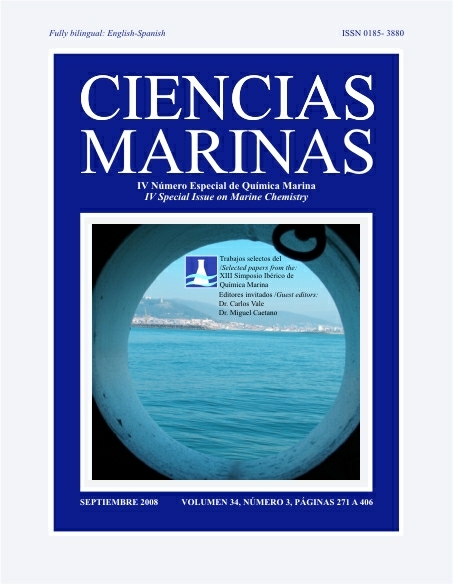Environmental chemical data and Carcinus maenas biochemical responses in a coastal eutrophic ecosystem (Óbidos Lagoon, Portugal)
Main Article Content
Abstract
The status of Óbidos Lagoon (Portugal) was assessed combining water quality, sediment quality, and oxidative stress responses in female shore crab Carcinus maenas. Two sites were surveyed in October 2005, one located in an impacted, confined inner branch (Barrosa) and another in the middle of the lagoon more influenced by the seawater input. Concentrations of ammonium and nitrate + nitrite were notably higher in Barrosa, although the differences in sediment metal contamination were minor. The availability of dissolved Mn, Cu, Ni, and Cd was higher in Barrosa, particularly in the morning, which suggests the influence of internal processes occurring near the sediment during the night. Female crabs captured at Barrosa exhibited alterations in hepatopancreas antioxidants, clearly indicating that the inner branch is a more polluted area. Crabs displayed increased activity of glutathione peroxidase, catalase, and glutathione S-transferase, as well as lipid peroxidative damage, whereas no differences were observed for total glutathione. Those significant responses were not accompanied by a significant elevation of metal levels in the hepatopancreas, suggesting that adverse effects may have been caused by the synergism of stressors.
Downloads
Article Details
This is an open access article distributed under a Creative Commons Attribution 4.0 License, which allows you to share and adapt the work, as long as you give appropriate credit to the original author(s) and the source, provide a link to the Creative Commons license, and indicate if changes were made. Figures, tables and other elements in the article are included in the article’s CC BY 4.0 license, unless otherwise indicated. The journal title is protected by copyrights and not subject to this license. Full license deed can be viewed here.

